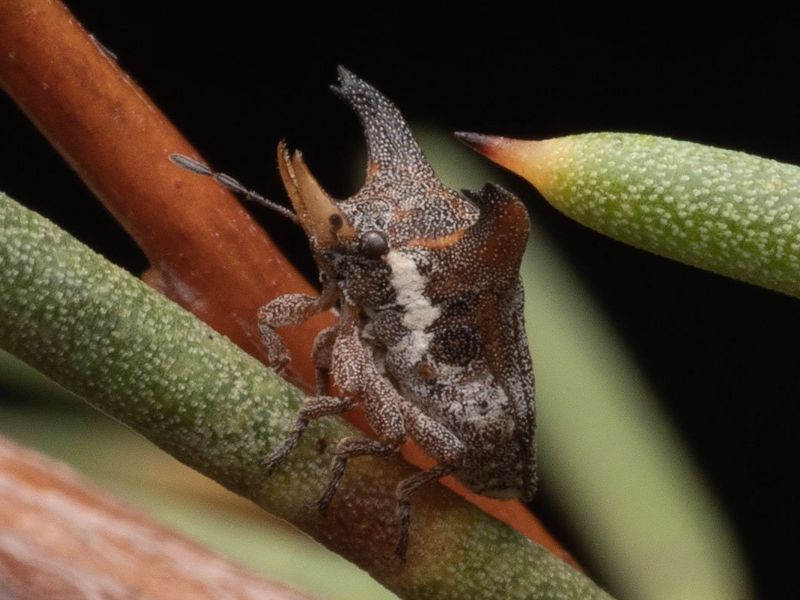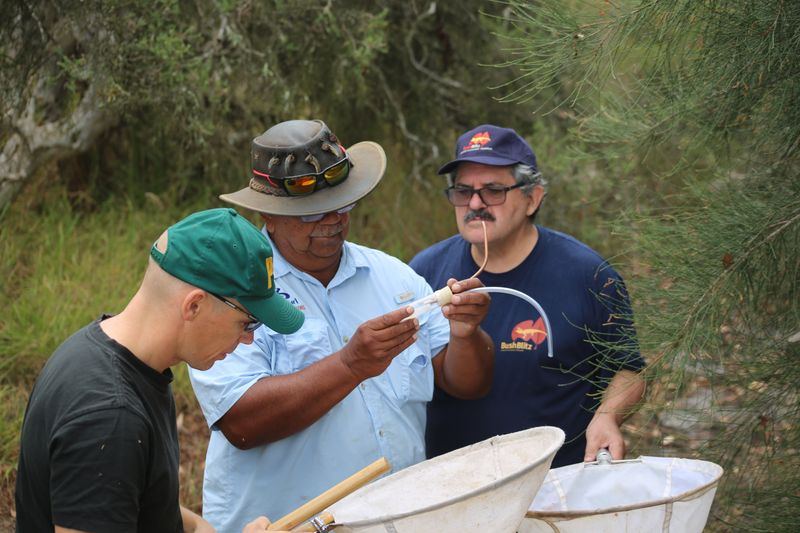Stink bug with tusks discovered in Western Australia
Entomologists from the University of New South Wales and Western Australian Museum have made the fascinating discovery of a stink bug species that is believed to be new to science, during a two-week Bush Blitz expedition near Kepa Kurl/Esperance in Western Australia.

This stink bug is the size of a pea and is remarkably well camouflaged on its host plant, a local Hakea species. If you look closer, you can see its huge curved horns and bright yellow tusks.
The stink bug was discovered with the help of the Tjaltjraak Rangers and Senior Cultural Advisor Doc Reynolds at a place of cultural significance to the Wudjari people of the region.
The Kepa Kurl - Tjaltjraak Boodja (Esperance) WA Bush Blitz is the program’s 48th expedition and involved Parks Australia staff and 15 scientists including botanists from WA Herbarium, zoologists from the Western Australian Museum, Northern Territory Museum and Art Gallery, Griffith University, University of New South Wales and the Australian Museum.
Tjaltjraak Rangers and Senior Cultural Advisors worked alongside the scientific team, sharing their invaluable knowledge of the area and helping to discover the new species.
Five science teachers also joined the expedition; each selected as part of the Bush Blitz TeachLive program. TeachLive has helped to engage more than 20,000 young people by bringing the expedition directly into the classroom in real time via a dedicated web link.
Since Bush Blitz’s inception in 2010 it has discovered more than 1,850 plant and animal species new to science including frogs, reptiles, snails, fish, spiders, marine invertebrates and insects.
The Bush Blitz program has worked with more than 50 land management organisations, along with 300 Indigenous rangers and Traditional Owners to improve our understanding of Australia’s biodiversity while sharing knowledge between research institutions and First Nations communities.

